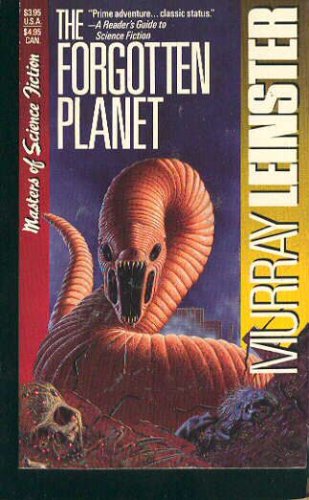Army ants thoroughly dominate their biome already, if they were larger their territory would extend hundreds of miles. They’re just ultra efficient life destroyers.
Yeah, I’m going with Them. Mainly because there’s not really such a thing as ONE ant. the entire colony.
After that? Maybe the mosquito – they already kill more humans than any other insect and they’re tiny.
But I agree that centipedes and parasitic wasps like the cicada-killer wasp would also be terrifying.
More than any other insect. More than any other anything.
Even humans do not kill as many humans as the mosquito.
By far the biggest mass murderer on the planet.
Imagine a hellgrammite the size of a bus:
http://www.cals.ncsu.edu/course/ent525/water/aquatic/pages/14_jpg.htm
Just when you thought it was safe to go in the water again …
They already pinch painfully at their current size of a couple inches, and they are aggressive predators. They are larva, of course, and we would also want to consider the super-sized adult dobson fly it would become:
Depends if you mean individual or collective.
The parasitic-type wasps are mostly solitary or live in small colonies. Terrifying individually, but for a true threat, I’m going with the army ant. The only reason they don’t eat people regularly now is that we are so much larger and can get out of their way …
Isn’t the term mass-murderer used to designate a single being, or perhaps the leader behind an organized effort (e.g. Hitler, Stalin, Pol Pot, et al)? A single mosquito may, at best, kill maybe a couple of dozen people, if that. And there is no organized effort, to the best of my knowledge, on their part. That said, if it is organized, they can claim that they are fighting a war against humans, thus the killings are defensive and do not qualify as mass murder. Of course, as we (humans) are winning the war and will get to write the history, best to demonize the opposition with terms like mass murder.
If they were bigger it’d be something like this. ![]()
Fair enough.
My point was, if you are sitting with some friends and trying to guess what creature is the most dangerous thing to humans on the planet, the mosquito wins by a landslide. They kill faaaar more humans than any other creature on the planet. Nothing else comes close.
If they were bigger see my last post.
I see they’re vacationing in Minnesota.
mosquitoes are so boring though, the opportunistic bloodsuckers are only dangerous because they don’t brush after each meal.
how about bedbugs? every breath you take is a huge “Please feast on me!” sign.
Many, many moons ago, when I was in the Everglades, I swore that there were some mosquitoes that needed FAA clearance. Scale them up to the point where they are the same size as a stealth bomber, getting bitten would be akin to getting skewered by giant swordfish. Disease would no longer be a factor.
Seonded. This thread o’ mine might be of interest: Just how big can my race of giant, sentient praying mantises be? - Factual Questions - Straight Dope Message Board
As a species, human beings are really good at avoiding and/or defending ourselves against predators-- I’m having trouble thinking of a large mammal that preys on humans but isn’t threatened, endangered, or extinct. Wasps and mosquitoes use their small size to their advantage; large predatory insects would be less agile (if they could fly at all). We could bait them with cattle and hunt them to extinction with a limited number of human casualties.
But what happens to us if giant caterpillars kill all or nearly all of the plants?
Worldwide ecological collapse. Mass starvation. A silent, gray world covered in a uniform layer of silk.
I’ll take a relatively quick death by parasitic wasp, thankyouverymuch.
If we ignore the physics and biology that prevents insects from growing larger, any discussion of the physical or biological features that would make the supersized insects dangerous (or not) will be completely random.
That’s crazy talk. Giant bees with giant stingers, giant ants with giant pincers, etc.
What is the ‘random’? We’re just talking about as-is but upscaled to unrealistic sizes.
If we “just” upscale insects they become insanely powerful. An ant scaled up to weigh the same as a lion would be able to carry 50 times its own weight, or 7.5 tons. Assuming that’s the scaling factor we want to use, and the only thing that makes it non-random is the old “carry 50 times its weight” fun fact.
As to the strength of its pincers I’ve no idea what a non-random choice of scaling factor would be. An increase proportional to weight? Size?
Perhaps it would be simpler, instead of scaling them up, to scale ourselves down? What would be most threatening to a human the size of an ant?
Murray Leinster’s 1954 novel The Forgotten Planet has the basic situation of people living on a planet inhabited by (impossibly) large insects, arthropods, and the like (their ancestors crash-landed on the planet). Life is extremely hazardous because of the large insects. Ants are about the size of barbells, and aren’t a problem individually. Everything else is in scale. Mantises are bad, but the worst thing, overall, in his ecosystem is the millipede. That’s surprising to me, since the millipedes (even the large ones) I’m familiar with are vegetarians, although there apparently are carnivores and omnivores. In his novel, this was the one species you had to avoid.
Lame. Epic Fail on your part.
